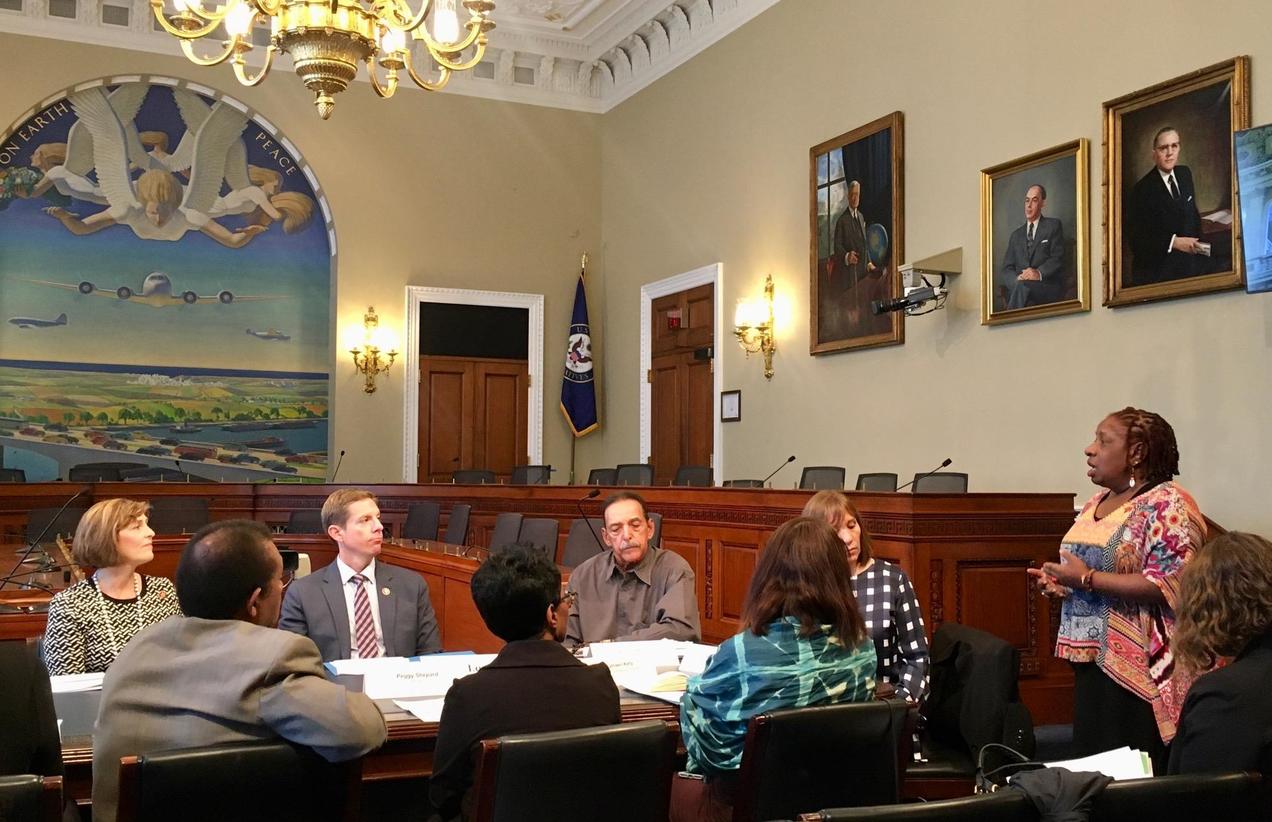The Environmental Justice for All Act (EJ for All Act) is an essential federal legislative effort to begin remedying the long history of environmental racism and injustice in the United States, including the cumulative and disproportionate pollution burdens threatening communities of color, low-income communities, and Native/Indigenous nations and communities across the country.
This landmark bill was developed in close collaboration with leaders of the environmental justice movement. The EJ for All Acts was created through extensive public input. It is unique in that it was shaped by the same people and communities which will directly benefit from its policy changes. The EJ for All Act recognizes, therefore, that meaningfully improving lives of Black, Indigenous, People of Color requires transformative changes led by those at the frontlines. As described by Michele Roberts, National Co-Coordinator of the Environmental Justice Health Alliance for Chemical Policy Reform, This is legislation that our affiliates see themselves in.
 ” data-adaptive-image-max-retina-img=”
” data-adaptive-image-max-retina-img=” ” data-adaptive-image-max-img=”
” data-adaptive-image-max-img=” “>
“>
Michele Roberts is the National Co-Coordinator for Environmental Justice Health Alliance for Chemical Policy Reform. She speaks at a briefing at U.S. Capitol 2019.
NRDC strongly supports the EJ for All Acts central elements, which are important steps toward remedying a long legacy of harm and ensuring the fair treatment and meaningful involvement of all people regardless of color, culture, national origin, or income with respect to the development, implementation, and enforcement of health and environmental laws, regulations, and policies.
The EJ for All Act includes the strengthening of NEPA (National Environmental Policy Act), which has been the foundation for public participation in federal government activities since its inception in 1970. Section 14 of EJ for All Act will allow NEPA to fully realize its potential to be an effective tool for environmental justice. It requires federal agencies to provide meaningful community involvement opportunities for projects that could affect an environmental justice community. To advocates like Dr. Mildred McClain, Executive Director of the Harambee House in Savannah, Georgia, this makes possible the assurance that frontline and fenceline communities will always have a seat at the decision making table. Federal agencies must prepare a community impact report when proposing an action that could have adverse environmental or public health effects on an environmental justice area. A Community Impact Report will evaluate whether the proposed action will cause adverse health outcomes in the community. It will also include historical patterns of exposure and cumulative effect, even if these effects are not under the control of the agency assessing the report.
Section 7 of the EJ for All Act requires federal agencies to consider cumulative effects in Clean Air Act (CAA), Clean Water Act (CWA), permitting decisions. Ineffective oversight of environmental regulation and policymaking is a long-standing problem. It overlooks the reality of frontline communities that often face multiple environmental threats simultaneously, as well as social stressors like racial discrimination and historical trauma, as well reduced access to resources. A cumulative impacts burden, such as the one faced by West Virginia communities and described by Kathy Ferguson, Interim Executive Director of Our Future West Virginia, is unfortunately not unique: Communities from around the state have endured toxic chemical explosions and leaks into our air, hazardous runoff from coal mining and fracking into our waterways, faulty corrosive tanks that lead to a critical contamination of our water supply, grounds filled with contaminants like fly ash and other seeping poisons. These are all on top of the ongoing stream of allowable pollution and hazardous emissions.
Research shows that environmental pollution risks are greater when people or communities face multiple threats and stressors. The EJ for All Acts proposal that accounts for cumulative impacts in CAA or CWA permitting is crucial to reducing inequalities and ensuring that people already at high risk of environmental and social vulnerability are not placed under additional burdens.
The bill also strengthens the Civil Rights Act of 1964 by restoring the right of individuals to sue in federal court for discrimination based on race, color, or national origin, whether the discrimination is intentional or creates a disparate impact defined as an action or practice that, even if appearing neutral, actually has the effect of subjecting persons to discrimination. This recourse will allow for progress in addressing the unbalanced pollution burden and stark environmental health disparities experienced by fenceline communities due to ongoing structural discrimination. As Delaware State Representative and Delaware Concerned Residents for Environmental Justice member Larry Lambert describes, “Growing up in Claymont, neighbors in Knollwood were used to seeing a thin layer of steel dust on their cars in the morning and feeling it in their lungs. Because the laws currently in place are not protecting us against environmental racism poisoning families, this bill is crucial for legacy communities such as mine.
Because it is necessary, the EJ for All Act seems ambitious. It addresses the wide range of environmental justice communities’ daily challenges in fighting for clean air, clean waters, and a healthy, safe environment. It is a long overdue fix to our nations failed chemical management strategies, and the cumulative hazards that have resulted for Native/Indigenous communities, communities of color, and low-income communities.
NRDC looks forward working with Representative Grijalva and Representative McEachin, our environmental justice community partners to move this legislation forward, and to begin correcting the long-standing history of environmental injustice in America.

